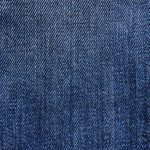Oil stains on silk can be as stubborn as an unyielding knot, seemingly impossible to untangle. But fear not, for there are methods to delicately coax the oil out of this delicate fabric.
With a few simple steps and a touch of patience, you can restore your silk garment to its former glory. Let's explore the gentle yet effective techniques that will help you rescue your silk from the clutches of unsightly oil marks.
Table of Contents
Key Takeaways
- Assess damage carefully and test cleaning solutions before tackling oil stains on silk.
- Use absorbent materials like cornstarch or talcum powder to draw out oil without spreading.
- Apply gentle detergent solution to break down oil, rinse with cold water, and air dry flat.
- Avoid harsh treatments, use low heat ironing with protective cloth, and consider professional dry cleaning if needed.
Assess the Oil Stain
When dealing with an oil stain on silk, the first step is to carefully evaluate the extent of the damage. Evaluating techniques play a vital role in determining the best course of action for removing the oil stain effectively. One approach is to gently dab a small, inconspicuous area of the silk fabric with a clean white cloth to see how the material reacts. This test helps in understanding the fabric's sensitivity to different cleaning methods.
Oil removal strategies vary depending on the type of oil and the silk fabric involved. For instance, if dealing with a fresh oil stain, sprinkling cornstarch or talcum powder on the affected area can help absorb excess oil before attempting any cleaning. However, for older or stubborn oil stains, using a mixture of mild dish soap and lukewarm water might be more effective. The key is to proceed cautiously and test any cleaning solution on a hidden area of the fabric first to avoid causing further damage.
Blot the Oil Stain
When dealing with an oil stain on silk, the first step is to blot the area with absorbent materials like a clean cloth or paper towel. Gently press down to absorb as much oil as possible without spreading the stain further.
Use Absorbent Materials
To effectively remove oil from silk, start by gently blotting the stain with absorbent materials. Using absorbent materials offers several benefits when tackling oil stains on silk. They work by drawing out the oil from the fabric, helping to prevent the stain from setting in further.
When choosing absorbent materials, opt for items like cornstarch, talcum powder, or even white chalk. These materials can effectively absorb the oil without damaging the delicate silk fibers. Remember to take silk care considerations while blotting to make sure you don't rub the fabric vigorously, which could lead to spreading the stain or damaging the silk.
Apply Gentle Detergent
For effectively treating oil stains on silk, gently dab the affected area with a mild detergent to begin the process of removing the oil. When dealing with delicate fabrics like silk, it's important to exercise caution in stain removal. Choose a gentle detergent specifically formulated for silk care.
Mix a small amount of the detergent with water to create a solution. Using a clean cloth, blot the oil stain with the detergent solution. Avoid rubbing vigorously, as this may damage the silk fibers. Let the detergent sit on the stain for a few minutes to penetrate and break down the oil.
After allowing it to work its magic, gently rinse the area with cold water. This method should help lift the oil stain off the silk fabric without causing damage.
Apply Talcum Powder
So, how can talcum powder help remove oil stains from silk?
Well, talcum powder works by absorbing the oil from the fabric.
After sprinkling it on the stain, a gentle brushing technique helps lift the powder and the absorbed oil away, leaving your silk clean and oil-free.
Talcum Powder Absorption
I dusted the silk fabric with talcum powder to help absorb the oil stain. Powder application is a simple yet effective method in oil removal techniques for delicate fabrics like silk.
The talcum powder acts as an absorbent, drawing out the oil from the fibers. After letting the powder sit on the stain for some time, gently brush off the excess powder using a soft brush. This process can be repeated until the oil stain is noticeably reduced.
Remember not to rub the fabric vigorously to prevent damaging the delicate silk fibers. Talcum powder is a gentle yet powerful ally in combating oil stains on silk, making it an essential tool in your fabric care arsenal.
Gentle Brushing Technique
To effectively remove oil stains from silk using talcum powder, begin by gently brushing off the excess powder after allowing it to sit on the fabric for some time. This essential brushing technique is vital for silk preservation as it helps lift the oil along with the powder without damaging the delicate fabric.
When brushing, use light strokes in the direction of the fabric's weave to prevent any snagging or stretching. Avoid using excessive force to prevent further harm to the silk fibers. By incorporating this brush technique into your oil stain removal process, you can effectively treat the delicate silk fabric while ensuring the oil is lifted away.
Let It Sit
Allow the silk garment to sit for at least 10-15 minutes to give the oil a chance to be absorbed. This step is important in breaking down the oil molecules and making it easier to remove from the delicate silk fabric. While a quick fix might be tempting, patience is key in ensuring the best results in oil stain removal from silk.
In addition to letting it sit, there are alternative methods that can be used in conjunction with this waiting period. One effective technique is to sprinkle a small amount of cornstarch or talcum powder onto the oil stain. These powders work to absorb excess oil, making it simpler to lift off the silk fibers later on. However, be cautious not to rub the powder into the fabric, as this could embed the oil further into the silk.
Gently Brush Off Powder
After letting the silk garment sit to absorb the oil, gently brush off the powder to remove excess oil and prepare the fabric for further cleaning. This step is important in the process of silk care and oil stain removal.
Here are some tips to effectively brush off the powder:
- Use a Soft-Bristled Brush: Opt for a soft brush to avoid damaging the delicate silk fibers.
- Brush in One Direction: Gently brush in one direction to prevent spreading the oil stain.
- Check Excess Powder: Make sure to remove all the powder residue before proceeding to the next cleaning step.
- Be Gentle: Treat the silk fabric with care to avoid causing any harm.
- Inspect Thoroughly: Take your time to make sure all excess powder is removed, paying attention to seams and creases.
Wash With Mild Detergent
When it comes to removing oil stains from silk, the next step is washing with a mild detergent.
I'll guide you through the process with three key points: gentle hand washing, cold water, and air drying flat.
Gentle Hand Washing
To effectively remove oil from silk, gently wash the fabric by hand using a mild detergent. When hand washing silk for oil stain removal, consider the following tips:
- Use lukewarm water: Avoid hot water as it can damage the delicate silk fibers.
- Create a soapy solution: Mix a small amount of mild detergent in water to create a gentle cleaning solution.
- Gently agitate the fabric: Lightly swish the silk in the soapy water to help lift the oil stains.
- Avoid rubbing or scrubbing: Be gentle to prevent damaging the fabric.
- Rinse thoroughly: Make sure all soap is removed to maintain silk preservation.
Use Cold Water
Consider using cold water along with a mild detergent to effectively wash oil out of silk. When dealing with delicate fabrics like silk, it's important to prioritize silk care and stain removal techniques. Cold water helps prevent the oil from setting into the silk fibers, making it easier to lift the stain.
Begin by gently dabbing the affected area with a clean cloth to absorb any excess oil. Then, mix a mild detergent with cold water to create a gentle cleaning solution. Submerge the silk item in the mixture and gently agitate it, ensuring the detergent reaches all stained areas. Remember, silk requires special care, so avoid harsh scrubbing or hot water to maintain the fabric's integrity during the stain removal process.
Air Dry Flat
For best results, gently air dry the silk item flat after washing it with a mild detergent solution. When caring for silk, it's important to make sure proper drying to maintain its delicate texture and sheen. Here are some key tips to follow:
- Lay the silk item flat on a clean towel to absorb excess water.
- Avoid hanging silk items to dry to prevent stretching or distortion.
- Keep the silk garment away from direct sunlight to prevent color fading.
- Gently reshape the item while damp to maintain its original shape.
- Allow the silk item to air dry completely before storing it to prevent mildew or odors.
Following these steps will help preserve your silk's beauty and guarantee effective stain removal.
Rinse Thoroughly
I thoroughly rinse the silk fabric to remove any remaining oil residue. This step is essential for silk preservation and effective oil removal. By rinsing the fabric properly, you guarantee that no oily traces are left behind, maintaining the silk's integrity and beauty.
To rinse the silk fabric effectively, follow these simple steps:
| Rinse Thoroughly Steps | Description | Importance |
|---|---|---|
| 1. Use Cold Water | Gently run cold water over the silk fabric to wash away the oil residue. | Cold water helps prevent setting the oil stain into the silk fibers. |
| 2. Gentle Hand Squeezing | Lightly squeeze the fabric to help release any remaining oil trapped within the fibers. | This step aids in loosening and removing the oil from the silk fabric. |
| 3. Repeat if Necessary | If the oil residue persists, repeat the rinsing process until the fabric is oil-free. | Thorough rinsing guarantees complete removal of oil, preventing future stains. |
Following these steps will help you effectively rinse the silk fabric and eliminate any traces of oil, contributing to successful fabric care and stain removal.
Air Dry
After thoroughly rinsing the silk fabric, the next step is to carefully air dry it to complete the oil removal process. Air drying is important for silk preservation and requires attention to detail.
Here are some key points to take into account:
- Avoid Direct Sunlight: Direct sunlight can damage silk fibers, so find a shaded area to hang the fabric.
- Use a Gentle Breeze: Position the silk where it can catch a gentle breeze to aid in the drying process.
- Patience is Key: Allow the silk to air dry naturally to prevent any heat damage that could occur in a dryer.
- Check for Dampness: Make sure the silk is completely dry before storing it to avoid mildew or mold growth.
- Consider Indoor Drying: If outdoor drying isn't an option, indoor drying techniques using a fan can also be effective.
Iron on Low Heat
Using a gentle iron on low heat setting is crucial when removing oil from silk fabric to avoid damaging the delicate fibers. Silk care requires a cautious approach to maintain the fabric's quality.
Before ironing, make certain the silk garment is slightly damp; this helps prevent water stains. Place a clean cloth over the oil-stained area to act as a protective barrier between the silk and the iron. Gently press the iron on the cloth for a few seconds at a time, moving it around to avoid prolonged contact with one spot. This method helps transfer the oil from the silk to the cloth. Remember to check the progress periodically to prevent overheating the fabric.
Proper fabric maintenance involves being attentive during the ironing process to prevent any additional damage. Once the oil stain has lifted, allow the silk to cool before further handling. This approach ensures effective stain removal while safeguarding the delicate silk fibers.
Final Inspection and Care
Upon completing the oil removal process, a thorough final inspection and care routine are essential to guarantee the silk garment's longevity and pristine condition. Here are some important steps to make sure proper silk preservation and storage:
- Inspect for Residual Oil: Check the garment under good lighting for any remaining oil stains.
- Air Dry Properly: Hang the silk item to air dry completely before storing to prevent any mildew or musty odors.
- Avoid Direct Sunlight: Store silk garments in a dark place to prevent fading and discoloration.
- Use Acid-Free Tissue: Place acid-free tissue paper in between folds to prevent creases and damage.
- Consider Professional Dry Cleaning: For tough stains or overall maintenance, opt for professional dry cleaning to preserve the silk's delicate fibers.
Frequently Asked Questions
Can I Use Any Type of Detergent to Wash the Silk After Applying Talcum Powder?
I wouldn't recommend using any detergent on silk immediately after applying talcum powder. It's best to stick to gentle alternatives for silk care. Always check the fabric care label and consider professional cleaning for valuable silk items.
How Long Should I Let the Talcum Powder Sit on the Oil Stain Before Brushing It Off?
I let the talcum powder sit on the oil stain for at least one hour before brushing it off gently. The effectiveness of talcum powder depends on giving it time to absorb the oil. Brush in the direction of the silk weave to prevent damage.
Is It Safe to Use a Hairdryer or Other Heat Source to Speed up the Drying Process After Rinsing the Silk?
Using a hairdryer on silk can be risky. It's best to avoid it to prevent damage. Opt for gentle drying techniques like air drying or using a towel. Patience is key for preserving silk's delicate fibers.
Should I Avoid Using Any Type of Stain Remover or Bleach on the Silk Fabric?
I always avoid using stain remover or bleach on my silk fabric to preserve its quality. I opt for dry cleaning or alternative methods for long-term maintenance. It's important to prioritize silk preservation for lasting beauty.
How Often Should I Inspect and Care for Silk Clothing to Prevent Oil Stains From Setting In?
I make it a habit to inspect my silk clothing frequently to prevent oil stains from setting in. By caring for my silk garments with regular maintenance, I guarantee they stay in pristine condition.
- What Makes Nonwoven Fabric So Cost-Effective? - July 11, 2025
- Nonwoven Vs Woven Bags: an In-Depth Comparison - July 11, 2025
- Which Wax Strips Are Better: Woven or Nonwoven? - July 11, 2025







